|
By Stephanie Nixon (Stephanie.Nixon@fema.dhs.gov)
 Irma, the puppy.
Region III employees came together to support Region IV
Hurricane Harvey response operations at a designated Incident Support Base
(ISB), located in Ellenwood, Georgia.
Although Region III employees may
have felt somewhat out of their comfort zone by being assigned to logistical
roles, all stepped up to the challenge. Led by Leonardo Montalvo and coached by
Brad DeWitt the Region III employees became a close-knit team.
The team gained another member when
animal assisted therapy became part of the ISB execution playbook. A six-month-old pit bull puppy was onboarded as an emotional support animal to provide the
team with improvements to their physical, social, emotional, and cognitive
health.
Affectionately named Irma by team
members, this loving and playful puppy found her role and captured the hearts of the
ISB team. Each team member (dog lover or not), found comfort in Irma.
Irma supported response operations, through
24-hour shifts. Irma’s routine included warmly greeting each team
member as they started their 12-hour shift, and initiating at least a few
minutes of puppy play. Since Irma worked 24 hours a day and seven days a week,
she was the only team member entitled to officially “sleep on the job.” Since
completing her job in Georgia, Irma has redeployed to Florida where she will
continue her response operations as comforter-in-command.
Emotional support
animals are a valuable part to any team, particularly those working on
disaster-response operations. Irma is surrounded by those who not only adore
her, but understand the importance
of her assigned mission during disasters – finding comfort in Irma.
By John Ingargiola (John.Ingargiola@fema.dhs.gov)
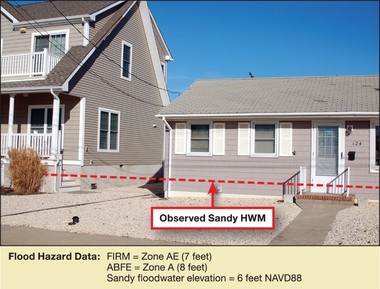 Screenshot of Flood Hazard Data and Observed Sandy HWM.
After a substantial or unique disaster, the FEMA
Building Science Branch sends in Mitigation Assessment Teams (MATs), to study
how buildings performed, and to better understand how natural and manmade
events affect the built environment. The MAT program is currently managed by
Dan Bass. Five years ago, for Hurricane
Sandy, I had the honor of leading the MATs.
October 29th marked five
years since Hurricane Sandy’s New Jersey landfall date. In total, Sandy caused
at least 147 direct deaths (72 in the mid-Atlantic and northeastern US) and
cost an estimated $70.2 Billion.
The MATs look to improve national level building
codes, standards, and industry guidance through strategic lessons learned, as
well as the effectiveness of FEMA mitigation grants and key engineering
practices and principles promoted by FEMA.
The MATs include experts from a wide variety of specialties
including engineering, floodplain management, architecture, and healthcare, as
well as State and local officials, and other experts. These matrixed teams study
the coastal impacts, damages and operational impacts to hospitals and other
critical facilities. They also study damage to schools, high-rises, police,
fire, and historically significant buildings.
The Hurricane Sandy MAT Report made over 50
recommendations. In the past five years, roughly 75% of these recommendations
have been implemented. One of the highlights is that the International
Residential Code (IRC) adopted FEMA’s recommendation to build higher in coastal
areas to prepare for storm surge and guidance like Providing
emergency power for critical facilities and Floodproofing
non-residential structures.
The work done
by the Hurricane Sandy MAT has helped the Nation to protect its citizens and
their property, and to ensure that we are all better prepared when disaster
strikes. FEMA takes pride in its ability to take the tragedy of a
disaster and work diligently to gain value from its study.
Additionally,
on behalf of the entire MAT, I would like to recognize two Hurricane Sandy MAT
members, Tom Reynolds and Richard Silverman, who have passed away since its
completion. Their efforts and work will forever be valued in its effect on the
safety and security of the Nation.
By Jennifer Burmester
(FEMA-Mitigation-Planning@fema.dhs.gov)
 Diagram from the Job Aid illustrates the relationship between cost and level of effort for planning grant subapplications.
The
National Mitigation Planning Program, together with the Hazard Mitigation
Assistance Program (HMA), is pleased to announce the release of a new job aid
for planning grant subapplicants. Subapplicants are typically local
governments, but can also include tribal governments applying for assistance
through the state.
The purpose of the job aid is to provide
considerations for the development of a planning grant scope of work with the goal
of encouraging strong, comprehensive planning grant subapplications. Instead of
giving communities a sample scope of work, the job aid will help communities think critically
about what is needed for their hazard mitigation plan. It will also
help them understand the level of effort and cost implications of those needs.
In general, the cost and level of effort needed to develop or update a local
hazard mitigation plan grow with the complexity of the planning area, planning
process, and data analysis needed, as shown in the accompanying graphic.
The job aid uses a question-and-answer format
to guide mitigation planning teams through considerations related to previous
planning efforts, the planning process, available data and risk assessment,
development of the mitigation strategy, and plan adoption. It also presents
other considerations for cost estimates, such as potential training needs,
using contractors, and accounting for in-kind funding and management costs.
The job aid is available at https://www.fema.gov/media-library/assets/documents/148768.
If you have any questions, please contact Jenny Burmester
(Jennifer.Burmester@fema.dhs.gov), Nicole
Aimone (Nicole.Aimone@fema.dhs.gov), or Lilah
Haxton (Lilah.Haxton@fema.dhs.gov).
By Kathleen Boyer (kathleen.boyer@fema.dhs.gov)
 Screenshot of the Flood Economics virtual event recording from YouTube.
As part of the continued promotion of Flood
Economics, a research-based resource developed by the Economist Intelligence
Unit (EIU) in partnership with FEMA, the project team executed a virtual event
on September 20th. Building Resilience: Investing in Mitigation to Reduce Risk was
live-streamed from the EIU’s New York City office and featured a robust
conversation about the business case for investing in flood and natural
disaster mitigation actions to lessen the risks faced by communities across the
country. While a wide range of topics were discussed, one of the main takeaways
was the importance of forming partnerships between the public, Federal, and
private sectors to help encourage a robust flood mitigation strategy that
includes the entire community.
An editor from The Economist Group moderated the
discussion and was joined by the following top executives:
- Joseph Cordes, associate director of Trachtenberg School and
co-director of the Regulatory Studies Center, George Washington University
- Bessie Schwarz, co-founder and chief executive of Cloud to Street
- BJ Murphy, Mayor of Kinston, North Carolina
- Edgar Westerhof, Flood Risk and Resiliency Lead, Arcadis
If you couldn't join the discussion, you can
watch a recording of the virtual event on the Flood Economics
site. A direct link to the video is also available. If you have any questions, please contact Kathleen Boyer (kathleen.boyer@fema.dhs.gov).
By Sarah Devaney-Ice (sarah.devaney-ice@fema.dhs.gov)
Following the devastating effects of Hurricanes
Harvey, Irma, and Maria, communities are especially sensitive about what
happens next, making communications during this time critically important. To
support recovery communications, Resilience
Action Partners, the Community Engagement and Risk Communication (CERC)
contractor, offers several archived training webinars and in-person workshops
for FEMA staff and partners. These training sessions build on and reinforce key
mitigation concepts, effective message development, presentation skills and other
communication skills essential for effective post-disaster communication. To
access the training sessions:
- Participate
in a live CERC workshop that can be delivered via webinar or on-site to provide
opportunities for coaching, practice, and team building.
-
Mitigation Topics: Integrated Hazard Mitigation Planning;
Hazard Mitigation for Non-Planners; Action Tracking 101; Action Keepers:
Collecting Mitigation Actions During the Risk Mapping, Assessing, and Planning
(Risk MAP) Lifecycle
-
Communication Topics: Presentation Skills; When Risk MAP
Meetings Become Contentious: Remaining Cool, Calm, and Effective; How to Answer
Questions; Communicating the Effects of Map Changes on Flood Insurance – What
to Know; What to Say; Flood Insurance Basics.
While the training is helpful for post-disaster
communication, it is designed to prepare us ahead of time. Consider building
your team’s communication toolbox now.
Interested in communication and mitigation training
for your team? Contact the CERC provider’s training manager Victoria
Barksdale (victoria.barksdale@ogilvy.com).
By Jennifer Burmester (FEMA-Mitigation-Planning@fema.dhs.gov)
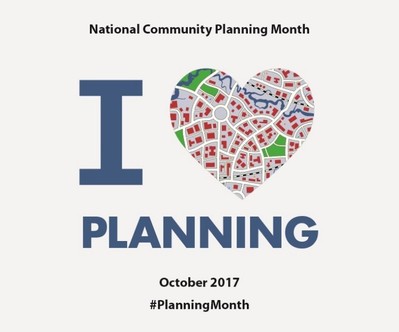 The National Mitigation Planning Program is celebrating National Community Planning Month this October.
Founded in 2006, National Community Planning Month
is celebrated each October to highlight the role of planners and the importance
of good planning in our communities. The National Mitigation Planning Program
supports states, tribes, and local communities across the country in making
sound planning decisions to reduce risks to natural hazards.
To celebrate this year, the National Mitigation
Planning Program is promoting its resources and guidance to the entire RMD
community. These tools, resources, and guidance support effective hazard
mitigation planning that works with the overall planning framework in
communities. Key publications include the following:
From the basics on planning requirements to
advanced plan integration, these resources and more can be found on the Mitigation Planning Resources page, the Tribal Mitigation Planning Resources page, and in the Mitigation Planning Resource List.
By Tamra Biasco (Tamra.Biasco@fema.dhs.gov)
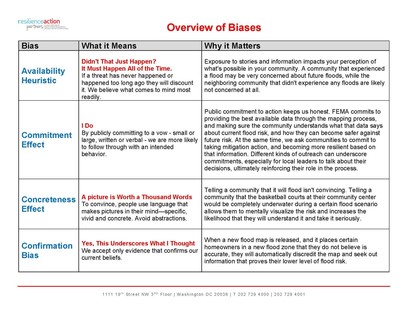 Region X Overview of Biases Graphic
To enhance messaging, FEMA Region X wanted to
better understand how the inherent biases and worldviews of individual
audiences shape their decision-making. Resilience
Action Partners, the CERC provider, facilitated a “Precision Audience Profiling”
workshop to address these topics and how to implement them.
The workshop focused on how audiences received
messages and information based on their worldviews and personality traits, and
how these characteristics influenced actions. Region X staff were led through a
discussion and exercises designed to help them anticipate and recognize likely
biases they may encounter. These group exercises also helped attendees practice
identifying and applying targeted approaches to messaging and persuasion. The
presentation, exercises, and breakout sessions addressed:
- How humans make decisions, why it’s so difficult to change minds,
and what key types of cognitive biases block our efforts to enlist others
to action;
- Different types of biases that might be encountered and how more
precise audience profiling can result in more focused communication that
addresses these biases;
- What participants’ personality traits and worldviews were, and how
that might influence their community interactions; and
- How to incorporate storytelling and emotion-based narrative into
messaging efforts.
Regional staff were extremely engaged in the
workshop and noted that they found the session “the best/most applicable
personality-focused training we’ve had.” As a follow-up, Resilience Action Partners will create archetypes specific to
Region X, paired with targeted messaging that can be used by the Region to help
overcome misconceptions and biases and motivate people to action.
To read more Regional Best Practices, visit the Risk Management Directorate
SharePoint. To submit a Best Practice, contact Sarah Devaney-Ice at sarah.devaney-ice@fema.dhs.gov.
By Sarah Devaney-Ice (sarah.devaney-ice@fema.dhs.gov)
 Resilient Nation Partnership Network Logo
Over the past six weeks, FEMA’s Resilient
Nation Partnership Network (RNPN) has shared a range of information and
resources related to recovery, rebuilding, and insurance in response to the
recent hurricanes affecting Texas, the southeast U.S., and Puerto Rico. These
resources have included fact sheets, checklists, and social media messaging for
distribution on partner channels, thus expanding reach among victims, local
officials, and other key stakeholders.
Furthermore, FEMA hosted a coordination
call with select RNPN partners that gave them the opportunity to have a
one-on-one conversation with Angela Gladwell, Deputy Assistant Administrator of
FEMA RMD. During the September 29th call, FEMA communicated its short and long-term
priorities following Hurricanes Harvey, Irma, and Maria, and asked partners for
recommendations on how FEMA and the RNPN can continue to work together and
collaborate on unified efforts. The conversation was thought-provoking and
valuable, and opened the door to a series of future conversations between the
RNPN and other program areas in RMD.
FEMA’s RNPN is composed of approximately
150 organizations that represent diverse industries, missions, and
communities, but each share a common stake in building stronger, more resilient
communities. Partners include The Nature Conservancy, the Association for State
Floodplain Managers, Columbia
University, Smart Home America, the Federal Alliance for Safe Homes (FLASH),
AIR Worldwide, National Hazard Mitigation Association (NHMA), The Pew
Charitable Trusts, National Institute for Science and Technology (NIST),
University of Pennsylvania, Climate Central, and more. The RNPN was started in
November 2015 to active a nationwide conversation around the importance of
resilience and to foster mitigation action at the community
level. The Annual RNPN Partnership Forum will be held on November 8th
at The Pew Charitable Trusts in Washington, D.C. A livestream will be available
for virtual access.
For more information, please contact Sarah
Devaney-Ice at sarah.devaney-ice@fema.dhs.gov.

By Roy Wright (Roy.Wright@fema.dhs.gov)
I’ve talked with many of you about the
three things I see as central to my role here in FIMA: asking questions,
communicating, and cultivating grit.
Grit – as you probably recall – is that space where passion and perseverance come together.
Hurricanes Harvey, Irma, Maria have
called on grit in very direct ways.
50-some odd days into this trio’s impact, so much continues to be demanded of
us. NRCC duties have rolled through Blue and Gold rotations several times.
Deployments of Regional and Headquarters staff moved many of us to the
frontline with survivors – and some of those deployments have already been
extended.
With more than 120,000 flood insurance
claims filed, our company partners are moving policyholders through the claims
processes and getting money in their hands. Substantial Damage and Mitigation
Assessment Teams, and Best Available Data, and expediting grants and managing
the Fund, and deploying our cadres, and innovating around temporary housing
solutions, and supporting re-authorization, and training adjusters – it just
keeps running on, literally. On top of all of this, so much more will be
required in the months to come.
Passion alone cannot keep us going for
months. It requires sticktoitiveness;
it requires perseverance.
Some of you used this short,
ten question instrument late
last year to consider your level of grit.
Each of you should open it up and respond again to the ten questions. For those who haven’t answered this short
set of questions, today is a great day to do it. I wonder how the realities
of Hurricanes Harvey, Irma, and Maria have shaped you. Have your responses to
those ten questions shifted in light of your experiences in recent months?
Yet, grit isn’t just about you by
yourself. Often, grit is affected by the community or colleagues around
you. Take some time today or tomorrow to talk with those around you about their
passion and perseverance. Check in and find out how the pace and centrifugal
forces of the past few months are weighing on them. While the survivor is our focus, don’t forget those around you who
proudly wear the FEMA badge. Help them along the way, too.
By Christina Finch (Christina.Finch@fema.dhs.gov)
Many of you have been supporting the disaster operations in
different ways – some have been deployed, others have supported insurance
operations and call centers, a number of you have worked the NRCC/RRCC, some
have provided technical/programmatic support, some have support media
inquiries, some have helped put task orders in place, and some are taking on
new duties to keep steady state operations moving where needed – and
more. The demands of the disaster operations, in many cases, are requiring
us to step outside our normal day job to fill gaps or needs. It may also be
requiring us to find new paths to get to the desired outcome. Some may
feel excited to dive into new work, but others may feel some discomfort or
anxiety, especially if you are stepping into something brand new or are being
asked to deliver in a different way.
All of these roles are opportunities to learn something new, and
take a look at our work with a new lens. You may be able to interface directly
with disaster survivors, and hear what is important to them. You may be
able to see how FIMA’s data and information contribute to response and early
recovery efforts. If you are in Headquarters, you may see our program delivery
from the field perspective, or vice versa. You may be working programs you
have never before supported, or see how FIMA fits with other agency and partner
recovery efforts. You can see directly how our steady state work is used
in disaster recovery. You may also see where we have gaps, and where we
need to be doing better.
Take advantage of these opportunities. Challenge yourself. Make
mistakes, and learn from them. Bring those experiences back to your day
job. It will help us be a better Risk Management Directorate moving
forward. It will help us look at our work differently, and ultimately deliver
in new ways.
By Paul Rooney (Paul.Rooney@fema.dhs.gov)
FEMA maintains guidelines and standards to support
the Risk MAP Program. These guidelines and standards define the specific
implementation of the statutory and regulatory requirements for the National
Flood Insurance Program (NFIP). These also outline the performance of Flood
Risk Projects, processing of Letters of Map Change (LOMCs) and related Risk MAP
activities. More information is available at FEMA.gov.
FEMA has a maintenance plan for the Risk MAP
guidelines and standards and issues updates on an annual basis. This notice
provides information about a schedule change to the annual update, which was
originally expected to be released in November 2017.
Because of the series of significant disasters over
the past two months, FEMA is delaying the finalization and release of the
standards and guidance until February 2018. This will allow FEMA to
continue this important work, while recognizing that staff time and resources
are focused on the ongoing response and recovery operations.
The period for comments on the guidance documents
is being extended until October 31st.
The scope of the update is going to continue as
planned.
If you have feedback about FEMA’s guidelines and
standards, submit comments or suggestions by e-mail to FEMA.GS@riskmapcds.com.
By Vince Brown (Vince.Brown@fema.dhs.gov)
If you are planning to submit an abstract for the 2017 ASFPM
Conference, the deadline is quickly approaching! The ASFPM deadline is 5 pm on Sunday, November 5th.
For each of your abstracts, please send an email with the
following information:
- Abstract Title
- Keyword that the abstract applies to (i.e. mitigation or stormwater)
- RMD staff that will be facilitating or presenting at the session
As is done every year, we are tracking the submissions to
aid in planning for the conference. The tracking of these submissions also aids
in our ability to advocate for approved travel to the conference.
If you have any trouble submitting online between October 31
and November 5, please let Justin Strickland (strickland_justin@bah.com) and
Allison Allison (allison_allison@bah.com)
know, and they will forward along your submission prior to the deadline. Please note that everyone is required to
submit their title to us and separately to ASFPM by the November 5
deadline.
If you have any questions, please feel free to reach out to
Sarah Devaney-Ice at Sarah.Devaney-Ice@fema.dhs.gov.
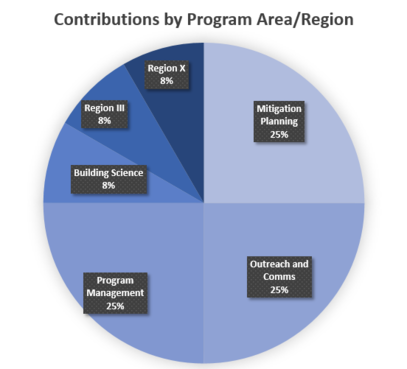
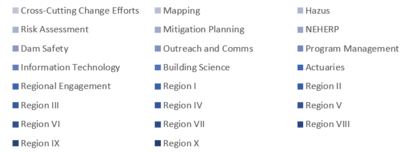 |